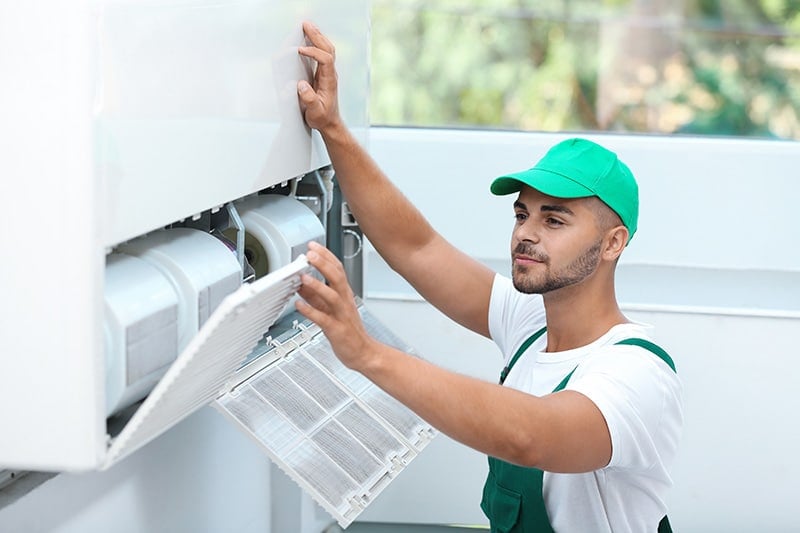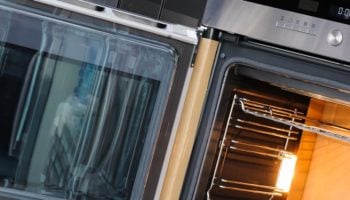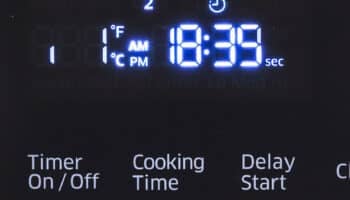We've independently reviewed this article to make sure it's as accurate as we can make it.
To find out more about our article creation and review process, check out our editorial guidelines.
Does your oven take forever to heat up, and you’re desperately trying to figure out why?
That sucks! Ovens are a key part of our daily lives, and if you enjoy baking as much as I do, then noticing that yours isn’t working as it should and taking ages to heat is very inconvenient.
Having your oven take forever to heat is annoying and concerning as not only do you have to spend more time than necessary in the kitchen, but you’re also faced with the possibility of having to spend money on potential repairs.
Luckily, you’ve come to the right place for answers.
Below, you’ll find a list including 3 simple steps to diagnose an oven that’s taking forever to heat up and an easy fix you can try to get everything back to normal.
When your oven is taking forever to heat up, first, you’ll need to check your power sources, diagnose whether your heating/broiling element is faulty, and then replace whichever part requires it.
Keep reading to get your oven heating in record time!
Why Your Oven Is Taking Forever to Heat Up
There are many reasons why your oven is taking forever to heat up, but the most common one is related to a faulty heating/broiling element. In my experience, when either of the components fails, your appliance can have a hard time reaching high temperatures.
Here’s what I recommend you try to address the situation and get your oven back to normal.
#1 Check Your Power Sources
The first thing you must check when your oven is taking forever to heat up is that its power source is working well and meeting its requirements.
A bad power source/heating/broiling element will only affect electric ovens, as gas ovens don’t rely on them to reach high temperatures. If your wall outlet is not supplying enough power to the heating/broiling elements, it will take a long time to get hot, or it may never do so.
And the same goes for a faulty/frayed/broken power cable.
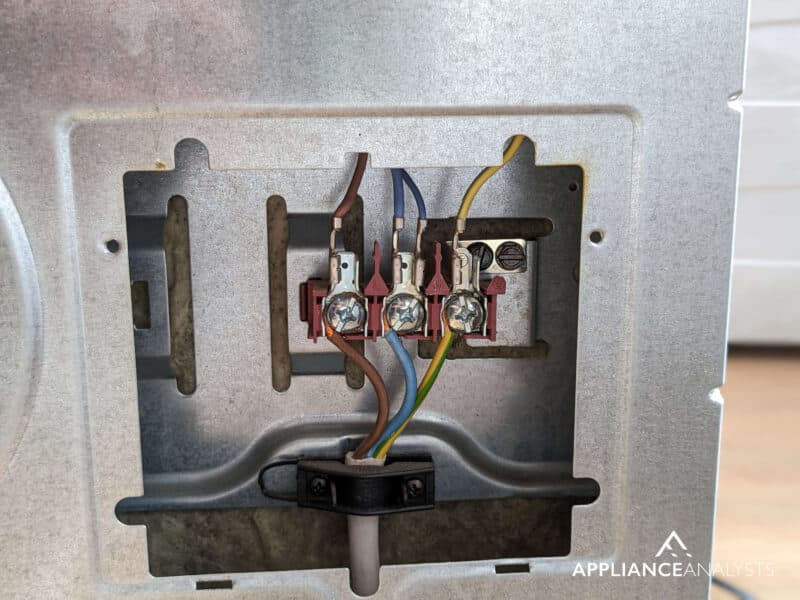
Solution: The simplest way to check whether your oven’s power sources are okay is by carefully unplugging the appliance from the wall outlet you normally use and then shutting off the gas valve supplying the oven.
From what I’ve seen, if the outlet seems to work normally, you can almost certainly rule it out as the culprit from the situation. However, if you want to be 100% sure, you can use a multimeter to test the wall outlet and see if it has continuity.
The last step is optional, but I strongly recommend it, as it can help you identify a larger issue with your home’s electrical layout and nip it in the bud.
Note: If the issue lies with a faulty/broken power cable, your best bet will be to check whether the cable can be easily detached and replaced. If not, please contact a certified oven technician, as there will be complex cables and connections that will have to be removed to install a new cable.
#2 Check the Heating/Broiling Element
If the wall outlet from which the oven draws power seems fine, the next possible reason your oven is taking forever to heat up is a bad heating/broiling element. Both components are responsible for different functions inside your appliance and are necessary to reach the right temperatures for successful baking.
When either component fails, your oven might not be able to reach your desired temperatures, yielding disappointing results and staying cool for much longer.
Solution: I’ve found that diagnosing a bad heating/broiling element is simple if you know what to look for and what to do. In most cases, something as simple as starting a baking/broiling cycle and observing which one seems to be giving you trouble is very effective.
If you notice the baking cycle gets hot enough, but the broiling one doesn’t, the broiling element is likely to blame and vice versa. You can also try listening for small clicking sounds that indicate both elements cycling on and off.
When you determine that either is faulty, you can look for a replacement by contacting your manufacturer or a technician you trust. The heating/broiling element’s model number can typically be found in your User Manual. If you no longer have the manual handy, please refer to our free resource below.
#3 Replace the Heating/Broiling Element/Thermostat
My usual advice is to DIY the repair once you have the oven’s replacement heating/broiling element or the thermostat. Addressing a faulty heating/broiling element or thermostat is not too complex, so if you feel up to the task, I see no reason why you shouldn’t be able to handle the job yourself.
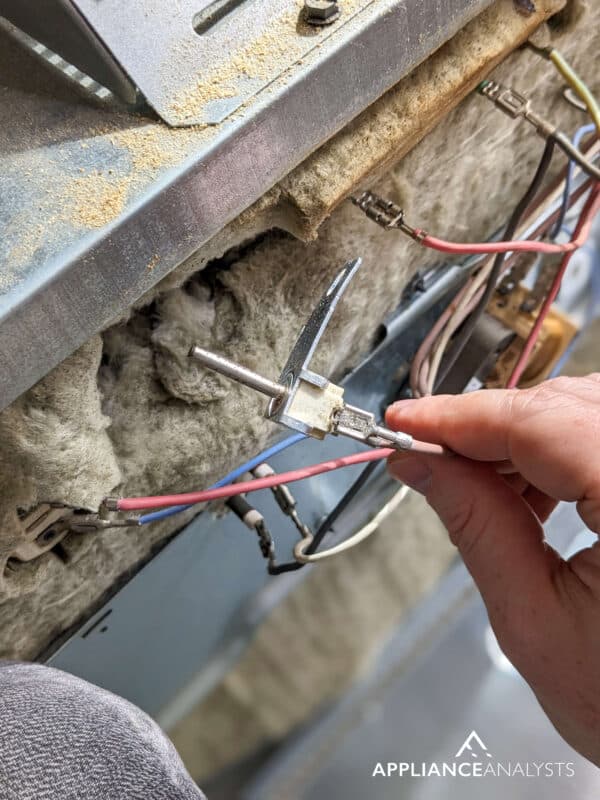
Depending on your oven’s brand and model, the steps to replace the heating/broiling element or thermostat will vary, so please ensure to read your User Manual to find the right steps for your specific appliance.
Solution: In many cases, to access your oven’s broiling/heating elements or thermostat, you’ll have to:
- Ensure the oven is unplugged from the wall outlet and the gas supply valve is turned off.
- Carefully pull the oven out of the space it’s in, whether it’s your kitchen cabinetry or a different space.
- Remove the oven’s backplate to expose the heating/broiling element’s wiring. Then, disconnect the elements carefully – your appliance’s wiring diagram can help greatly during the process.
- Go to the front of the oven, open the door, and look inside the baking compartment. Try to identify where the heating/broiling elements are screwed into and undo their screws so that they will come off.
- Once both elements have been successfully removed, get the new heating/broiling element and repeat the steps in reverse. Don’t forget to reconnect the elements to the wires at the back of the oven so everything works normally.
Note: Although the replacement process is rather simple, there’s no shame in asking a professional oven technician for help if you feel unsure about the process at any point. Granted, you’ll have to pay for the service, but you can’t put a price on your well-being.
Getting Your Oven to Heat Quickly
That about covers it!
When your oven is taking forever to heat up, your plans of hosting a get-together with friends or baking delicious Christmas cookies can come to a screeching halt.
Luckily, as I hope this piece has helped you better understand, addressing the most common causes behind an oven that’s taking forever to heat up can be very easy and quick. More often than not, something as simple as checking the wall outlet you normally plug your oven into and replacing the heating/broiling element will do the trick.
Thanks for reading. If this article was useful and answered your most burning questions, please check out our other resources and free guides below and consider subscribing to our newsletter.
Have a wonderful week!
-Craig.

